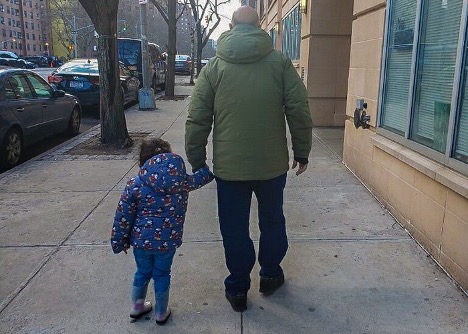Photovoice: Seeing the world through their eyes
Editor’s note: Annie Levy is based in New York City. She is a chief story officer who discovers and brings corporate/organizational stories and brands to life at www.AnnieLevy.com. Levy is also the communications and story fellow at Cantilever, a digital design and development agency.
When I was 10 years old, my father gave me a camera. This gift ultimately led to a career creating images of people that show them as people first – vs. a category or diagnosis.
Photovoice is a qualitative tool that puts the power of the camera in the hands of the individuals researchers are trying to understand. It allows research subjects to give voice to their own experiences through the images they create. I have utilized and honed photovoice by combining my experience as a photographer and my work understanding peoples’ mind-sets and emotions for a host of different sectors. I began using this tool extensively with medical patents and expanded to different populations and domains. And after 15 years, I’m an expert at drawing people out around the photos they present.
All of this relates to qualitative analysis
Have you ever asked an audience or group to tell a story about a subject? When put on the spot, half will declare that they are not storytellers. So, we as researchers ask questions. We start with our questions and not their context. We get answers, but the answers are born out of our stories and are not necessarily helpful in understanding other peoples’ experiences and needs.
Enter: narrative economics
Robert Shiller, winner of the Nobel Memorial Prize for Economics, developed the theory of narrative economics, with a focus on using stories as input and that these stories, unlike output stories, do not have to have a beginning, middle or end.
Susan Fader, a qualitative research guru, has developed the thesis that just as behavioral economics migrated from the world of financial economics and was modified and adapted by market research, so should market researchers start integrating narrative economics into research design – how they listen to and analyze insights, and how they view and use storytelling.
Narrative economics suggests moving storytelling from an output to an input which is to say the need to look at the narratives or stories of those we are engaging with vs. our summary story about them. As such, the projects I work on are designed to understand the stories that are the backdrops to peoples’ lives. I work to identify specific ways to allow them to share their stories and experiences with ease.
Photovoice: Unlocking questions we would have never thought to ask
Photovoice was originally designed by Caroline C. Wang, University of Michigan, and Mary Ann Burris, program officer for women's health at the Ford Foundation, headquartered in Beijing to empower rural women in Yunnan Province, China to influence the policies and programs affecting them. They built the methodology on the foundational concept that creating and providing a structure for communities and individuals to share images can – in a unique and engaging way – effectively tell us about their needs, problems and desires.
I call photovoice a tool that is hiding in plain sight. Everyone has had the experience of showing someone a photo of a person, place or thing that they care about and being able to tell the story of the image with ease, enthusiasm and emotion. And everyone has had the experience of being on the receiving end of that experience, knowing that it somehow magically unlocks things we would have never even thought to ask the person showing us the image.
So, why does this approach matter? And why is it helpful to those seeking to understand human behavior?
First, photovoice helps us get to the heart of what matters to people in a personal, specific and actionable way. It also allows researchers to engage with them from the start and tailor opportunities to the things that matter to them, including their actual interests and genuine concerns – things that they are motivated to pursue.
Photovoice in practice
The examples below show the power of images precisely because they deal with very personal matters of the heart that might have remained unknown and invisible were it not for the structures and spaces we created using photovoice to make their stories visible. In addition, in these examples the images can be shown, discussed and understood so that companies and organizations can make changes that actually matter to people.
Youth: Understanding their view of the world
I recently led a group of young people who were asked to use photovoice to understand their views of the world – what they think needs to change and specifically what they are both eager and willing to give their time and attention to.
Rather than put up stock images of issues and ask them to respond, we asked them to create a story arc that would define a problem, how they would solve it and what that solution would look like.
Because they shared their own contexts, the issues were personal, local and actionable:
- Planting trees on a block where there are none.
- Affordable housing to replace boarded-up buildings.
- Images of adults staring at devices instead of the children literally in front of them looking for attention.
Health care: How patients perceive their diagnosis
We were invited to create a photovoice project that would help clinicians from different disciplines think about how patients perceive both their diagnoses and in a general sense, the world of medicine. We worked with a group of young people who had previously been diagnosed with brain tumors. To understand their perspectives, we asked them to help us establish questions they thought were pertinent to their situations – which is to stay to provide us with their context.
The questions became photo assignments. One of the assignments they came up was: What scares me? Below is one group member’s response.

What scares me: Not being able to finish what I started. The image quality isn’t great, but I thought it was perfect for what I wanted to say. I’m a determined person that has always taken on and strived to accomplish a lot but there are many times that I have been delayed from what my goals are – mostly due to medical problems. I’m scared of being sidetracked and possibly even stopped from reaching goals that I have for my life. I thought the fact that this said “Sunnyside Ave” was pretty fitting because it expresses the positivity that I try to keep but even the most positive attitudes can be “under construction” at times.
By allowing participants to tell us about the story they wanted to tell, we were better able to understand what scared one of them about a potential recurrence. That opened a wealth of possibilities for interventions – questions about goals, questions about how these might be approached step-by-step, etc.
Community: Uncovering hopes and dreams
In another example, members of a community were asked about their hopes and dreams for their community. The question was broad in that it was intended to (again) allow them to tell us about their context. We asked for images that would tell us about their lives in their community.

Photo courtesy of East Harlem Action Collaborative – New York Academy of Medicine
My hope is that East Harlem will have more affordable childcare. Were it not for my father, I’m not sure what I would do. My hope is for increased resources.
The image and statement provided above is personal and speaks to policy formation. It also speaks to it in a way that gets to the emotion of why and how policy matters. Photovoice allowed participants to show us their world and their context.
Using images to guide questions in research
Using images to see what other people see helps us ask better questions – questions that pertain to the participants’ actual lives. And photovoice is not about random images. It is a methodology that exists in a structure that allows us to discover and gain insights about people’s thoughts, emotions and behavior. Designing prompts that become photo assignments is where much of the work lies – working with people to understand what they want to photograph unlocks their why.
Another reason I call photovoice the tool hiding in plain sight is that almost everyone walks around with a phone that contains hundreds (if not thousands) of images. These images tell the story of the context in which we live, what matters most and – at times – act as a daily diary of how we spend our time.
The application for the work is without limits as we seek to learn about the stories beneath people’s thinking, feeling and behavior, and how we can understand these in the context of our work.
